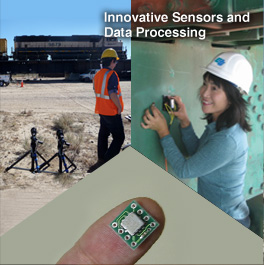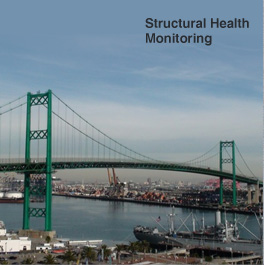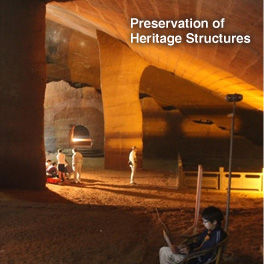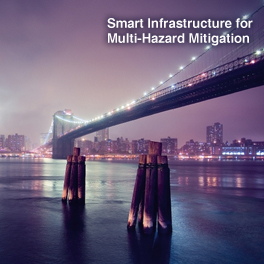Innovative Sensors and Data Processing
We develop a variety of innovative sensors for applications in difficult environments, including
- High-performance vision sensors for remote displacement measurement, powered by novel robust image processing methods,
- Electromagnetic sensors and data fusion algorithms for ultra-rapid and reliable detection of explosions, and
- A variety of non-destructive evaluation systems.
Structural Health Monitoring
Our research is aimed at making use of sensor data to diagnose structural health conditions for intelligent decisions regarding post-event emergency response and cost-effective asset management.
- We instrumented a number of civil engineering structures for long-term health monitoring and post-event remote damage assessment, which has produced a unique database containing continuously collected vibration data for more than 10 years in three bridges and one building.
- We have developed a variety of system identification algorithms to detect and locate structural damage and deterioration, as well as predicting their consequences. We validate these algorithms through large-scale seismic shaking table tests and field tests.
Citizen-Engaged Monitoring of Civil Infrastructure
The ubiquitous smartphones and their embedded sensors provide an unprecedented opportunity to engage citizens in monitoring spatially distributed civil infrastructure.Projects include:
- Citizen-engaged road evaluation system, which engages both pedestrians and motorists (through automated bump detection and analytics) to create a web-based real-time pothole map, enabling data-smart cost-effective road management.
- Citizen-engaged structural integrity monitoring network, which uses smartphone sensors to monitor change in structural vibration characteristics, useful for post-event, rapid damage assessment of urban infrastructure.
Preservation of Heritage Structures
We use sensors to monitor and diagnose health conditions of heritage structures, develop analytical models to assess structural safety, and propose retrofit solutions accordingly.
- Longyou Grottoes, China
- Dunhuang Caves, China
Intelligent Robotics
We develop unique robots equipped with novel sensing and control capabilities for special applications, including
- Robots for trenchless repair and rehabilitation of underground pipes, and
- Soft sensor suits and power suits for human power amplifications.
Smart Structures for Multi-Hazard Mitigation
Smart structures and infrastructure systems are developed for detecting and mitigating damage caused by earthquakes, winds, and other natural and man-made hazards, including
- Innovative friction-controllable sliding isolation system for seismic protection of bridges and buildings,
- Novel mega-sub structures for wind and seismic vibration control of high-rise buildings,
- Smart water distribution/delivery networks with self-sensing and control capability.
In addition, we develop fragility analysis methods to assess vulnerability of civil infrastructure systems to various natural hazards including earthquakes, hurricanes and storm surges.
Meet the People
See Real Time Monitoring






